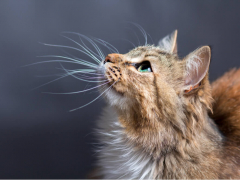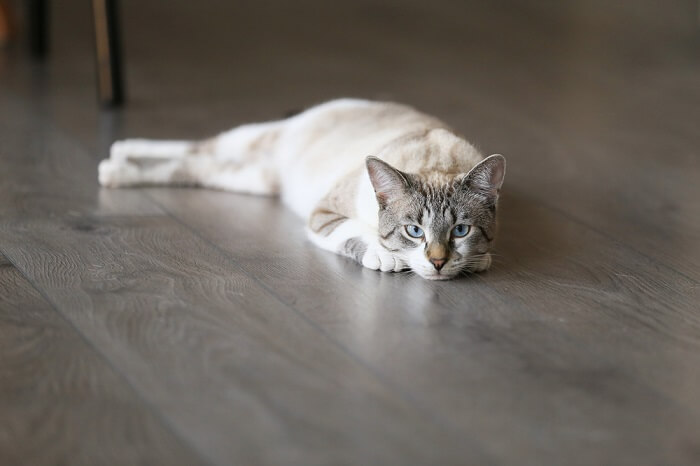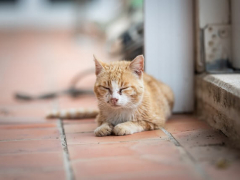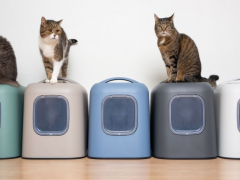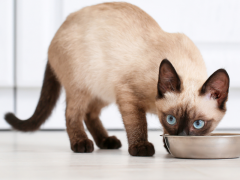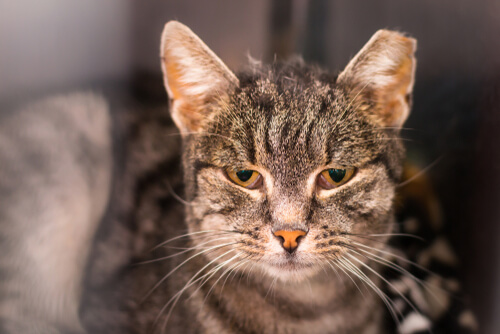
Feline Infectious Peritonitis (FIP) is a complex, serious, and until very recently, it was always ultimately a fatal disease of cats. FIP is caused by a biotype of Feline Coronavirus (FCoV), called Feline Infectious Peritonitis virus or FIP virus (FIPV).
The disease has a global distribution, and only affects cats: dogs, humans and other species cannot be infected. FIP is one of the most challenging infectious diseases of cats known to veterinary medicine.
The fact that this is a feline coronavirus infection has brought the disease into particular focus in 2020, with the emergence of COVID-19 in humans: it should be stressed that there is no connection between these diseases, other than the fact that the two different viruses belong to the same viral family.
How Cats Get Feline Infectious Peritonitis?
One of the complicated aspects of FIP is that while Feline Coronavirus (FCoV) is very common, Feline Infectious Peritonitis is rare.
FCoV, also known as Feline Enteric Coronavirus (FeCV) is found in 80-90% of cats living in multicat houses, but nearly all of these infections are harmless, with no signs of illness, or just mild signs of diarrhea. The virus is shed in the faeces, spreading easily between cats, commonly via litter trays or boxes, surviving in the environment for up to seven weeks.
A new cat to a household will be infected orally, mostly via contact with litter trays or boxes. Direct spread from cat to cat rarely happens.
Following infection, the virus can be found in the gastrointestinal tract and the blood for a short period, and then may be shed in the faeces, for weeks, months, or in some cases, for life. However, in a very small proportion of FCoV-infected cats,the relatively benign virus mutates to become the Feline Infectious Peritonitis Virus virulent biotype, which goes on to cause Feline Infectious Peritonitis.
This mutation may involve point deletions or mutations at the 3c gene but the full details have not yet been established. The mutation happens in an individual cats, with the mutant virus multiplying rapidly, infecting the macrophages and monocytes of the host cat and spreading throughout the body, causing disease.
The mutated FIPV virus is not shed in the same way as FCoV in the faeces, so is not thought to be directly infectious in the same way.
There are still questions about how this mutation happens and how development of FIP follows:
There are thought to be links between how much FCoV a cat is exposed to (a higher virus burden is more likely to lead to FIP), and how an individual cat’s immune system responds to the virus. Cats seem more likely to develop FIP if they experience stress (such as visits to a cattery, post-surgery, or being rehomed), a phenomenon linked to the fact that stress affects the functioning of the immune system.
Most cases of FIP happen in young cats, aged less than one year, although cats can be affected at any age, and it’s more common in multicat households, and in pedigree cats (e.g. Birman, Bengal, and Orientals). Male cats are more likely to develop FIP than females, and cats that are FeLV positive are also more likely to develop the condition.
How Feline Infectious Peritonitis Affects Cats?
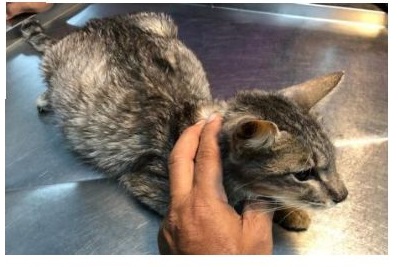
Feline infectious peritonitis in cats affects the body in a variety of ways, with the illness manifesting in either a wet or dry form.
FIP is described as a pyogranulomatous vasculitis, with effects throughout the body. The signs of illness are variable, depending on which part of the body is affected. Classically, there are two forms of FIP, depending on the cat’s immune response: wet (effusive) and dry (non-effusive). However these are not necessarily absolutes: some cases have elements of both the wet and dry disease
- Wet FIP (the effusive form) is a more acute, rapidly developing, disease, developing weeks or months after a period of stress such as rehoming or surgery. The clinical signs are more directly related to vasculitis (inflammation of blood vessels) with protein and fluid leaking out of blood vessels into body cavities, leading to the accumulation of fluid. The specific signs of the disease in an individual cat depend on which part of the body is affected by this fluid accumulation.
- The dry (non-effusive) form of FIP is a more chronic, slower onset and gradually developing disease, following a partial immune response by the cat’s body. Pyogranulomatous lesions (plaques that represent a combination of virus plus the body’s immune reaction to the virus) are found in organs around the body, including the liver, kidneys, spleen, lymph nodes, and brain, as well as in the abdominal cavity. Again, the clinical signs depend on which part of the body is affected. The dry form can develop into the wet form at a later stage of the disease.
Clinical Signs of Feline Infectious Peritonitis
The clinical signs of Feline Infectious Peritonitis are variable, depending on which type of disease is present, and which part of the body is affected.
Typically, infected cats have vague signs at first, such as lethargy, loss of appetite and weight loss. There may be episodes of pyrexia (fever).
In the wet form, the signs depend on where the fluid gathers.
- The abdomen is most commonly affected, resulting in ascites, with the abdomen visibly swollen and full of fluid. Sometimes, hard objects can be felt in the fluid when the abdomen is palpated, representing enlarged lymph nodes or the diseased internal organs such as spleen, liver or kidneys.
- If the fluid gathers in the chest cavity (thorax), there is difficulty breathing (dyspnoea), caused by the fluid preventing normal expansion and functioning of the lungs.
- If the fluid gathers in the sac surrounding the heart (a pericardial effusion), signs of heart disease may be seen, caused by the inability of the heart to contract normally due to the pressure of the fluid.
In the dry form, again the signs depend on which part of the body is affected, and they tend to be slower onset, over a longer period of time. This can range from general signs of illness when the abdominal organs are involved, difficulty breathing when the lungs or chest are involved, neurological signs when the brain or spinal cord is involved (such as ataxia or even seizures), or ocular signs when the eyes are affected (such as visual difficulties, with abnormal appearance of the eyes).
Diagnosis of Feline Infectious Peritonitis
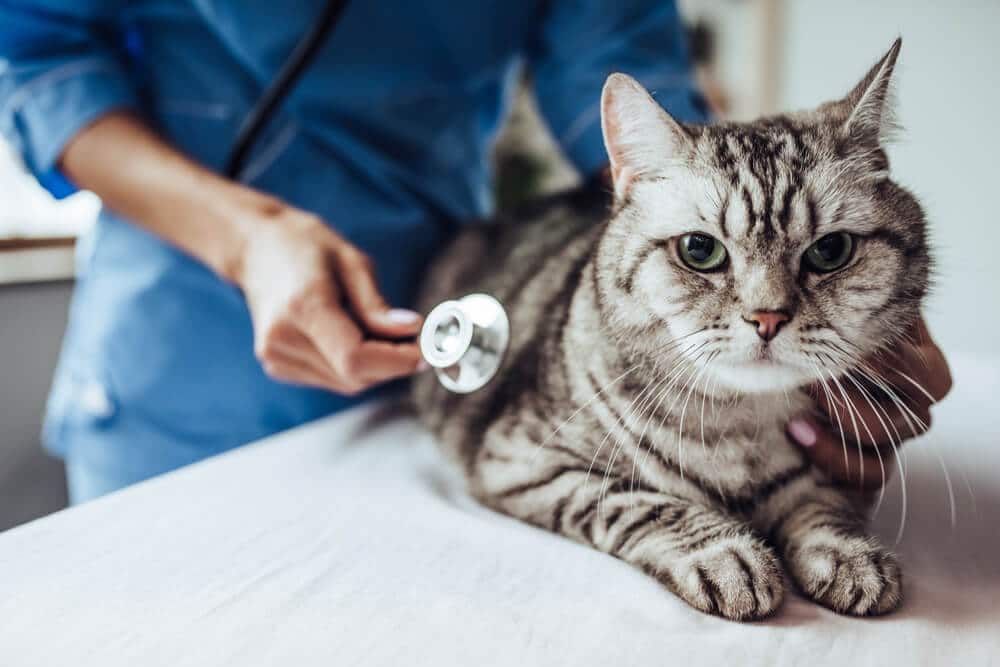
Your veterinarian can determine whether or not your cat has feline infectious peritonitis.
The only way that a definitive diagnosis of FIP can be made is via histopathology of affected tissues, when the pyogranulomatous inflammation can be seen under the microscope, along with identification of the presence of FCOV antigen in macrophages via immunohistochemistry. However, in most cases it can be difficult to obtain such samples from a living cat, and so this diagnosis may only be made post-mortem, at an autopsy.
More commonly, your DVM veterinarian will carry out a series of diagnostic tests, and the patchwork of results will lead to a likely diagnosis of FIP if this is the underlying cause.
Commonly undertaken investigations include:
- Physical examination, with signs as listed above, along with specific changes e.g. on detailed examination of the eyes with an ophthalmoscope.
- X-rays and ultrasound may show gathering of fluid in the abdomen and chest and enlargement of affected organs e.g liver, spleen, lymph nodes.
- Laboratory tests including analysis of fluid sampled from the abdomen or chest is the most common way that a strong suspicion of the diagnosis is formed. This fluid has particular distinctive characteristics: technically, it is referred to as either a modified transudate or an aseptic exudate, depending on its colour, viscosity, cell content and other aspects. A specific Polymerase Chain Reaction (PCR) assay for viral RNA can be carried out on these fluid samples but this does not distinguish between cats with the benign Feline Coronavirus (FCoV) and the pathological FIPV biotype.
- General blood tests, including haematology (lymphopenia, or reduced lymphocytes in the blood cell count, and anemia, are commonly seen) and biochemistry (a high protein level, or hyperglobulinemia, is common, with a low albumin:globulin ratio, hyperbilirubinemia is common, and raised liver and kidney parameters are common).
- Specific blood tests, including Alpha-1 acid glycoprotein: which tends to be elevated in cats with FIP (but it can be elevated in cats with other diseases too). Coronavirus antibodies can be measured using antibody titers, but antibodies to the FIP biotype of FCoV cannot be distinguished from the less pathogenic version of FCoV. Antibody levels are elevated in cats that have the benign form of FCoV, so they are often positive in healthy cats, and some cats with FIP do not have elevated levels. Nonetheless, in cats that have signs of FIP, very high elevations of FCoV would be seen as supportive evidence of the diagnosis.
Around 80-90% of cats in multi-cat environments and up to 50% of cats in single-cat households have FCoV antibodies, but only 5-10% of exposed cats develop FIP. - Other investigations include detailed neurological assessment by a specialist, with the possibility of cerebrospinal fluid (CSF) analysis, along with advanced imaging such as MRI, looking for the distinctive changes that are commonly found in FIP.
- Referral to a feline medicine specialist (e.g. a member of the American Association of Feline Practitioners) may be recommended by your local veterinarian.
Feline Infectious Peritonitis Treatment
Up until very recently, treatment of cats with FIP was very limited, and only palliative supportive care was generally possible, keeping affected cats as comfortable as possible for as long as possible. This generally involved the use of prednisolone or cyclophosphamide to reduce inflammation, appetite stimulants (such as mirtazopine and cyproheptadine). Other immune-influencing medication such as interferon were sometimes used.
However the big news about FIP treatment is an emerging therapy (being investigated by experts such as Niels Pedersen) with antiviral medication such as antiprotease inhibitors and nucleoside analogs to reduce replication of FCoV, and Polyprenyl Immunostimulant (PI) to support the immune system. New treatments have been nothing short of revolutionary, offering hope for cats with FIP of a full and complete cure.
Cat carers need to work with their own veterinarians to obtain optimal individualised care for their own cats. One of the immediate challenges is that the new treatment medications are not yet licensed for use in cats, meaning that in many jurisdictions around the world, it is impossible for veterinarians to access these life-changing drugs.
As a result of this lack of availability, informal groups with names like FIP Warriors have sprung up in many different places (such as Facebook Groups), offering support and even access to medications via the black market. This is highly challenging to the veterinary profession, as it is impossible for licensed professionals to promote the use of unregulated and unlicensed drugs.
Visit or Join the FIP Warriors® 5.0 Facebook Group
However, when the alternative is simply euthanasia, or allowing a fatal illness to take the life of a cat, it is easy to understand why cat carers may consider this route.
Licensed versions of these drugs are now becoming available (e.g. in the UK and Australia), and it is hoped that there will soon be no need for cat carers to consider the black market route.
Feline Infectious Peritonitis Prognosis

Unvaccinated cats catch feline infectious peritonitis (FIP) through close contact with other felines.
Until very recently, FIP was considered a fatal disease, with most cats deteriorating rapidly, requiring euthanasia to prevent terminal suffering. Some cats do have milder signs, with a longer course of illness, but the outcome is ultimately the same.
As a general rule, cats with wet (effusive) FIP used to live just for days or weeks, while cats with dry or non-effusive FIP surviving for weeks or months. However with the new treatments, cats seem to be able to be fully cured of the condition: these medications are not cheap, and they are not yet widely available, but it does mean that there is now hope for FIP cats.
Frequently Asked Questions
Can a cat survive with FIP?
Sadly, FIP is always ultimately a fatal disease, and treatment is palliative rather than curative.
Is FIP in cats contagious to other cats?
While the FCoV that causes FIP is highly contagious, the pathological FIPV biotype of FCOV is not: this biotype develops only in a small proportion of cats that are infected with FCoV.
What are the first signs of FIP in cats?
The first signs are often vague, and there are many possibilities, from inappetence, dullness and weight loss to abdominal swelling and difficulty breathing.
Should I euthanize my cat with FIP?
Ultimately, it is important that cats do not suffer unduly, and it’s important that affected cats are euthanized before this viral disease causes serious distress and suffering which would become inevitable in the final stages of the disease. Cat carers should follow the guidance of their veterinarians when making this difficult decision.
Is there a vaccine against FIP?
An intranasal, modified live virus (MLV) vaccine is available against FCoV, to be given to kittens from around 16 weeks of age. However there is controversy over the efficacy of the vaccine.
